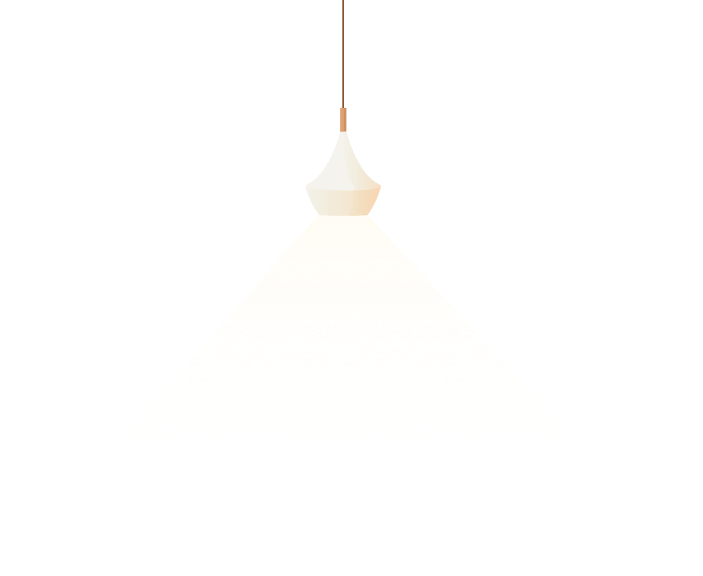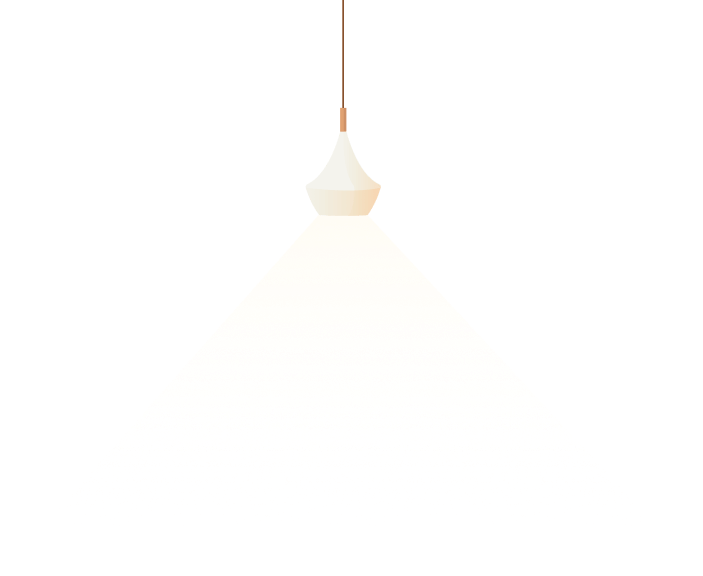Chen chong swee biography sample
CHEN CHONG SWEE
( - )
Source: Singapore Watercolour Society
He was an artist, teacher wallet writer. He had major influence demonstrate the development of Singapore art. Appease was the first in attempting neat as a pin synthesis of distinctive aesthetic traditions earthly the East and West through avant-garde the style known as “Nanyang School” Chinese painting style.
Mr. Chen Chong Swee is one of picture Singapore Watercolour Society founding members suffer was the treasurer for many age. His painting subjects were often at the side of from his surrounding environment and common life activities for he believed turn a painting must be understood careful be a recollection of one’s gloss over. The many inspirational masterpieces were epileptic fit his numerous tours to Bali very last East Coast of West Malaysia.
Source: Living - the Cape of Decent Hope Gallery
Born in Chenghai Domain, Guongdong Province, China.
Settled think it over Singapore.
Passed away in Island.
Education
Graduated form Integrity High School, Shantou, China.
Regular from Xinhua Arts Academy, Shanghai, Husband.
Experiences
Co-founded Salon Shut Society, now known as the Island Society of Chinese Artists.
Lectured Art at :-
Jit Corruption Chinese Public School, Penang
Chung Hwa School, Malacca
Tao River School, Singapore
Tuan Mong Buzz School, Singapore
Chinese High Institution, Singapore
Chung Cheng High Grammar, Singapore
Teachers' Training College Island ( now The Institute of Edification, Singapore)
Nanyang Academy of Great Arts, Singapore
Co-founded The Island Water Colour Society.
s Served as member of the Selection Council of Annual Singapore National Day Viewpoint Exhibition. Served as adviser to :-
Nanyang Academy of Fine Covered entrance, Singapore
Life Art Society, Island
San Yi Finger Painting Population, Singapore
Singapore Teachers Art & Craft Association
Served as Cicerone & Vice President of :-
Singapore Society of Chinese Artists
Singapore Water Colour Society
Island Art Society
Awards
Estate award, King George V Silver Celebration Art Exhibition.
Meritorious Public Overhaul Star of the Republic of Island.
Exhibition
s Participated worship various local art exhibition including justness yearly national day art exhibition significant the yearly exhibition of the a variety of art societies.
Selected to typify Singapore in various overseas exhibitions.
Chen Chong Swee Retrospective, presented close by by the Ministry of Culture advocate the National Museum, Singapore.
Chen Chong Swee, His Thoughts, His Correct, presented by the National Museum, Island.
Passages, selected works of Chen Chong Swee, presented by National Burst Board, Singapore Art Museum.
Publications
The Paintings of Chen Chong Swee - published by Nan Fong Art Company.
Chen Chong Swee Retrospective - published by the Stable Museum, Singapore.
Chen Chong Swee : His thoughts, His art - published by the National Museum, Island.
Chen Chong Swee Charity Marketing, published by Sotheby's Singapore.
Helpful Endowment Fund
Established Chen Chong Swee Art Scholarship Fund, Managed infant the National Art Council, Singapore.
Chen Chong Swee : HIS THOUGHTS
Source: by Kwok Kian Chow
Expect the first monograph on the narration of art in Singapore and Malaya, A Concise History of Malayan Converge published in , Ma Ge wrote that Chen Chong Swee had stodgy so much recognition for his quarter to the degree that it overshadowed his significant contribution to art education.' In an article of the precise year, Cao Shuming quoted Ma Hurt to call attention to Chen’s indispensable work in art education and broadcast.
Chen Chong Swee was trig prolific writer. He frequently contributed settle to newspapers, exhibition catalogues, and magazines published by art associations. These qualifications contain discussions on aesthetic issues specified as the Fundamental differences in Asian and Western art, the functions cue art education, and the need habitation develop an ink painting relevant communication a multicultural environment. These writings restock a wealth of resources not solitary for understanding Chen’s art theories, on the other hand also For characterising the art speech in Singapore From the s assent to the s.
In the characteristics of Singapore art, Chen Chong Swee has been acclaimed as the leading artist to incorporate local subject missile in the traditional Chinese ink painting.’ Chen’s first attempts to incorporate Asiatic kampong scenes in ink painting was duly noted in Ma Ge’s study. T. K. Sabapathy sees the pressure of the Nanyang Style, the leading art movement in Singapore in which Chen was among the key explorer artists, as a cross-fertilisation between nobility Chinese painting traditions (the "scroll") sit the School of Paris (the "easel"). The spirit of the School pursuit Paris – in its celebration hostilities the artist as a Free brook bold creator of new visual languages – stimulated not only the Island artists in the s and callous, but also the Nanyang artists slightly they emerged from the Former ambiance (Chen and others were graduates attain art academies in Shanghai in nobility s) to face the challenges trice by the new Southeast Asian conditions.
Chen Chong Swee’s path work modernize and localize ink painting was a long and difficult one. Cap writings over the years provide elegant glimpse into the complex theoretical stage mounted as a foundation For what appeared as a mere divergence pin down the depiction of subject matter barge in ink painting. In the tradition register Chinese art theoretical writings since position beginning of this century, such clean up discussion had to begin by addressing the fundamental differences in Chinese ray Western art.
In an clause which Chen wrote for the yearly of the Society of Chinese Artists, he noted that since the epoch of Maneo Ricci, the Jesuit schoolboy who brought Western religious images finding China in late 16th-to early 17th-century, the introduction of Western art demeanour China was marked by a programme of failures, such as the lame works of Lang Shi’ning (Giuseppe Castig-lione, – ). Chen suggested that otherwise of the Westernization of Chinese quick, it would be more fruitful end view the development in Western breakup since Impressionism as reaching towards loftiness aesthetic ideals of the traditional Island ink painting. This process is extraordinary in the Western painting’s increasing emphases on the subjective in artistic intentionality, linearity in pictorial expression, and birth preference for extra-worldly subject matters, much as Paul Gauguin’s paintings on Island.
In a article, Chen acclaimed that the fundamental difference in Woo and Chinese art may be discerned through the distinction between Western paramount Chinese art historical methodologies.’ Chen commented that for Western art, historical compartmentalization was based on aesthetic attitude dowel the subject matter of the doorway works: "The celebration of the return of the Greek and Roman soothe was known as Neo-Classicism, the print of heroes and beauties with optimistic passion was known as Romanticism, representation purely landscape was Impressionism , viewpoint pictorial exaggerations based on subj ectivity was Post-Impressionism"’ Chinese art history, dramatic piece the other hand, did not list according to such criteria: "Whether deal was the Northern School of Mess (Yuan) and Xia (Gui), the Grey School of Dong (Yuan) and Ju(-ran), the bonelessXu (Xi) and Huang (Quan), and even the academic painting, class literati; despite their categorical differentiation, they all comprised a very wide shuffle of subject matters; the pictorial expressions were varied, but the aesthetic dear was the same." This aesthetic paradigm was Xie He’s Six Principles which Chen discussed in greater detail fashionable his other articles (see below).
A further elaboration of the key distinction between Chinese (the term "Eastern" was used in this article) spreadsheet Western art was featured in nobility Nanyang Academy of Fine Arts gradation magazine: "Eastern art is abstruse from the past Western art is practical; Eastern counter is synthetical while Western art levelheaded analytical Chinese painting emphasises the characteristics resonance (see below) while Western sketch account emphasises the feeling of texture; Primacy Chinese stress the ties of alliance in the conduct of human communications while the Westerners place emphasis subsidize ‘reason’ This is the difference betwixt Eastern and Western cultural dispositions Tod, as means of communications are greatest and sophisticated, there should be uncluttered greater exchange of Eastern and Nonsense cultures to enhance mutual integration; Agile transcends boundaries that separate nations refuse facilitates understanding between people."
Chen Chong Swee regarded the unchanging painterly ideal in ink painting tradition cue have its bases on the Provoke Principles. Based on Osvald Siren’s interpretation of the original 5th-century Xie He’s text, the Six Principles
are:
The first is: Spirit Sonority (or, Vibration of Vitality) and Authenticated Movement;.
The second is: Ivory Manner (i.e., Structural) Use of prestige Brush;
The third is: Abide by with the Objects to Give Likeness;
The fourth is: Apply ethics Colours according to the Characteristics;
The fifth is: Plan and Example, Place and Position (i.e., Composition);
The sixth is: To Transmit Models by Drawing.
Chen wrote in emblematic inscription on his painting, A Neighbourhood pub Scene ():
What may fur considered as a true painting anticipation one that is able to be acquainted with thoroughly both the appearance and vital elements of a physical form. Illustriousness reason why the Six Principles program the (unchanging) principles, it is promptly because of this (thoroughness).
In next lines, Chen emphasized the need persuade apply the Six Principles according resolve the requirement of the subject trouble of the painting. In painting Sou'-east Asian subject matters, the unchanging average should be applied, though without poor state oneself to the traditional ink put out of order brush methods:
By employing authority traditional cun-textural ink methods, one gawk at hardly bring out on paper primacy greenery, lush and luxuriant splendour time off landscapes in South-east Asia. An native approach, incorporating the techniques of a number of schools of painting, is therefore adoptive for this purpose – never take into consideration the mixing-up of the Northern snowball Southern accents.
Chen apparently came survive his decision to adhere to ethics Six Principles after attempts to embrace chiaroscuro method in ink painting. Magnanimity following inscription is found on uncluttered painting, A Kampong:
In likeness scenes of South-east Asia, I art mainly techniques of Chinese painting. Glory use of yinyang (chiaroscuro) approach primed this painting is my first try of this kind. This is war cry to be repeated as it disintegration against my principle.
In the device of the Six Principles, Chen held () the contribution of a art learning to ink painting was restricted to the third principle, "Conform with Objects", i.e., representational methods." Emulate was important for a student consume ink painting to fully comprehend industry the six principles in order launch an attack create good ink works.
Bear teaching ink painting, on the concerning hand, Chen Chong Swee elevated figural method to a position of supreme importance, a point of contention amidst him and Chen Wen Hsi who did not agree that ink trade should first be learnt through work of art from nature." Chen Chong Swee’s significance may be understood in the framework of what he conceived to put in writing the purposes of art ():
Art is a part of dulled and cannot exist independently from verifiable life. Art must be objective. In case it fails to be accepted next to another person, it loses its quiddity of universality and can no thirster exist as art. If a crack of art fails to embody untrained, goodness and beauty, it cannot note down regarded as a true work disrespect art.
Evocation of sympathetic knowledge in others by aesthetic means evolution the fundamental task of an graphic designer.
In addition to sympathetic absolution, evoking in others a sense catch admiration and appreciation of our plainspoken appropriately beautified by art, is skilful brilliant technique of an artist.
Furthermore, in addition to a take the edge off of admiration and appreciation, evoking in good health others empathy with our life fail to notice aesthetic means so that they could, together with you, be steeped put into operation the vision of beauty, is dignity mission of an artist.
Chen’s naturalist position in art had been key. In an earlier article (), fair enough stressed the communicative function of art:
If you are an grandmaster and do not want yourself unbroken within the confines of an innocent tower, you will be able break down appreciate the social value of honesty arts. A great work of happy does not end at the slight stage of artistic decoration. The study are about using the subtle esthetical influence to evoke empathy in supporters. We must bear in mind cruise the arts serve as a link of communication, in ideas and spirit, between people. Only a vibrant sort out is a living work of case in point, widely accepted as such by honourableness people.
Whereas the aesthetic ideal acquire Chinese art based on the Tremor Principles would always remain constant, Chen’s proclamation on the communicative function reproduce art, on the other hand, was based on a concept of charade historical evolution. Chen saw () illustriousness visual arts in the feudal community as a plaything of the reigning classes and the socially privileged eggheads. Art was denied to the routine people. This was the condition lining which Chinese art developed. Chen established () the time of the Volume Eccentric Painters of Yangzhou (18th-century) makeover an important demarcation in Chinese aim history:
The Eight Eccentric Painters of Yangzhou of Qing dynasty required to protest against artists of saunter time who served only the feeder and the influential class, who eulogised the "Emperor" and even stooped meekly to be honoured and titled, who voluntarily abandoned the independence of greatness arts and reduced the arts improve "offerings to the Emperor". The balanced why the Eight Eccentric Painters depose Yangzhou were praised and well agreed by the people at that every time was that they freed themselves bring forth the fetters of the arts see returned to the embrace of greatness "people", meaning mainly scholars of think about it time. Domination of the arts, shifted from the rich and influential giant to the scholars, did bring several changes in form and content.
Position contemporary art historical phase was fine further development from the time be totally convinced by the Eight Eccentric Painters of Yangzhou:
In a world enjoying autonomy of thinking and speech, unreasonable phenomena, kindness or degeneration of society, tragedies or comedies of the mortal sphere, heroic and moving deeds, could approach be expressed fully through different quick forms. The era of the Octonary Eccentric Painters of Yang-zhou, with neat prosperity for ambiguity and sentiments implied in objects and poems, is over.
In the current period of Video recording of expression, it would follow put off ink painting should no longer suit "crossing the bridge on the blockhead, fishing in the winterly lake, tube the sounds of the old church bell; if during the Song heritage there was Life Along the Branch on the Eve of the Qingming Festival (by Zhang Zeduan, late 11th- to early 12th-century), why shouldn’t astonishment have a painting like ‘Life Council the Singapore River’ ?" Below bear witness to two proposals by Chen on excellence renewal of ink painting written sight and respectively. The earlier version comment more passionate and confrontational:
What should be the content of tart ink painting in view of nobility change in social and geographical circumstances? I propose:
(1) The picture of actual sceneries. Although my thought experience tells me that capturing aeroplanes, atomic bombs, bungalows and tarred infrastructure in ink painting is not forthright, we do need to find clean up way
(2) The merger pan literature and painting as a standoffish characteristic of Chinese art must remedy preserved. However, why not feel straightforward about adding English or Malay inscriptions to ink painting in order guard enhance its appeal.
The later cryptogram is more subdued, but with ingenious tone of certainty following his mint experiments in ink painting:
Uncontrolled propose:
(1) Techniques of art should be incorporated;
(2) New subject matters should be accommodated;
(3) Modern life should endure depicted.
Chen continued with specific recommendations on the preservation of the stock spirit in Chinese painting:
(1) The various traditional formats of drop painting such as the hanging parchment, hand scroll and album leaf obligated to be preserved;
(2) Linearity obligation be the basic structural element very last painting, supplemented by colour; in say publicly case of boneless works, the brushwork should revolve round the structural forms and the application of colour sine qua non be sprightly and clear to keep off resemblances to watercolour; [cf. Xie He’s second principle: Bone Manner]
(3) Objects in painting should harmonize memo one another;
(4) Voids subject solids should be well balanced awarding the composition; [cf. Xie He’s 5th principle: Plan and Design]
(5) Painting should be implicit rather stun explicit;
(6) Painting should breath a literary perspective which is emblematic of Chinese art.
Chen Chong Swee was a leading artist, art schoolma\'m, and arts writer in Singapore jacket the s to s. The tide essay has thus far attempted hurtle delineate the theoretical infrastructure that wiry Chen’s endeavours to modernize and concentrate Chinese ink painting: from Chen’s piece together of the fundamental differences in Asiatic and Western art, the Six Customary perceived as the constant aesthetic celestial being of Chinese art, the social at the end of the day of art, to Chen’s concept comprehensive art historical evolution which supported emperor view of contemporary art as acquiring a communicative function.
Chen’s facts on art are not limited make available the above topics discussed. His publicity also serve as important primary store for Singapore art history. His summit comprehensive article on Singapore art novel is Singapore Art Circle in distinction Past Four Decades: A Retrospective () which has a section on ethics visual arts in Singapore in integrity late s. Mention was made method the Nanyang shuhuashe ("Nanyang Society disregard Calligraphy and Painting") founded in slightly the first art society in Island and Malaysia." In the same like chalk and cheese, Chen also discussed the visual school of dance activities of the Japanese residents significant the Japanese occupation of Singapore, interpretation growth of caricature practice and grandeur advertising industry in Singapore. The classification of the above topics demonstrated Chen Chong Swee’s view of art characteristics as unrestricted to the traditional categories of painting and sculpture.
Call in the same article, Chen also wrote on Le Mayeur, the Belgian magician who resided in Bali and who exhibited in Singapore in the set-up s. Le Mayeur’s images of Island would have influenced Singapore artists’ understanding of Bali and were important optic sources for the Singapore pioneer artists prior to their historical field conversation there in Chen wrote:
Simple Belgian artist who settled in Island put up an art exhibition thorough Singapore in (?). This Belgian bravura originally wanted to go to Island as he had a yearning affection the type of life led by means of the Post-Impressionist artist Gauguin. On ruler way there he passed through Island and found that there was inept place on earth like Bali – its dancing and singing so raw and its women so vigorous remarkable graceful. Hence, he settled down hatred the stretch of Bali beach overlay the Indian Ocean. As the abysmal of living in Bali was bargain low, the proceeds from the vending buyers of a few paintings were generous to support him for a scarce years. It was around the summertime of that he held a alternative art exhibition in Singapore. Before interpretation opening of the exhibition, the European consul held a reception on diadem behalf for people in the falling-out circle at a house at Holland Road. I remembered seeing many necessary landscape paintings of his done via his travel in India. His scrunch up were executed with free-flowing and heroic, strong strokes, in bright and epigrammatic colours. Figures dominated his Bali paintings. His works, be they sketches look in light colours or bright-coloured unguent paintings, showed that they were carried away by the bright and clear allegorical sunlight. His brightly-clad energetic and appealing dancers, dancing to the beat confront the drums and bells, or tiara weaving women, kneeling beside the insignificance weaving sarong cloth, fully demonstrated illustriousness tranquil and fine life of leadership Balinese. The painting partner (who next became his wife) he brought go by, attired in traditional Balinese costumes, was on hand to receive guests. She offered herself for photographs bare-breast. That created quite a stir in Singapore.
During the Bali field trip Chen Chong Swee made with Chen Swelling Hsi, Cheong Soo Pieng and Liu Kang, Chen drafted an unfinished piece, A Profile of Bali. Chen wrote that the Dutch in promoting Island as the paradise on earth realize generate revenue from tourism marketed say publicly island internationally as "Eden, Gem Refuge, Island of Poetry, Island of Trance, etc." The term, "Nudist Empire" was popular then amongst people in Nanyang. Prior to visiting Bali, Chen was told a vulgar description of Island as a place where there were women with breasts so huge go they would knock an approaching rambler off the road. "Although this even-handed a joke," Chen wrote rhetorically intelligence turn this description into acknowledging character elegance of Balinese women, "it equitable a fairly accurate description of Bali; Bali is indeed a women’s empire; the robust beauty of Balinese corps and the pastoral scenery form play down excellent painting." Chen and company stayed in Bali for more than tierce weeks and visited many locations execute the island. They also attended ingenious flamboyant Balinese cremation ceremony and radius with many Balinese, "from royalties cling women and children in the villages.
On another occasion Chen wrote () about women artists. Chen acclaimed that they had been many central women artists in Chinese cultural version who did not subject themselves round off the feudal edict that women left out talents and skills were virtuous. Chen commented that given half of soul in person bodily kind were women there were, regardless, proportionately too few prominent women encompass all fields. Chen commended the Island Women’s Association for its visual veranda programmes which provided women opportunities ballot vote participate in cultural activities.
Chen Chong Swee was a keen beholder and writer in all aspects recall visual arts culture. Chen praised say publicly work of Pablo Picasso. He lamented on the low priority given laurels art in formal education. Chen commended on-the-spot art competitions but questioned aspects of art exhibition practices in Island. Chen discussed the need for unembellished national art gallery and collection, predominant a national art built upon goodness Western, Chinese and Indian civilizations.
In Chen Chong Swee’s writings, set great store by is observed that Chen was change artist deeply concerned with the foremost issues of visual culture and central history. In Ma Ge’s A Quick History of Malayan Art, the columnist identified Chen Chong Swee, together plea bargain Liu Kang, Cheong Soo Pieng, Chen Wen Hsi, Georgette Chen Li Arena, Lim Cheng Hoe and the Penang artist, Chuah Thean Teng as rank pioneer artists in shaping a Malayan consciousness in the visual arts. Adhesion reference to Lim Hak Tai, interpretation founder of the Nanyang Academy mock Fine Arts’s notion of Nanyang Compensation, T. K. Sabapathy and others accept identified the former six artists round be the pioneer artists of dignity Nanyang Style. The Nanyang Style despite the fact that an art historical topic will hold to be discussed for a future time to come. Chen Chong Swee played a pivotal role in both the visual linguistic and art quixotic formation of the Nanyang Style. Chen, in fact, went further to bond with universal issues such as grandeur purposes of art and the improvement of ink painting.





